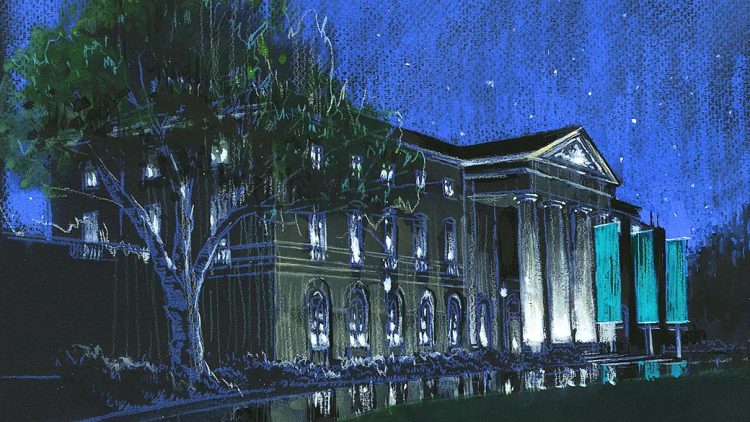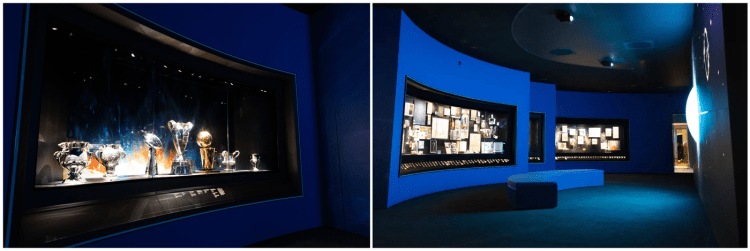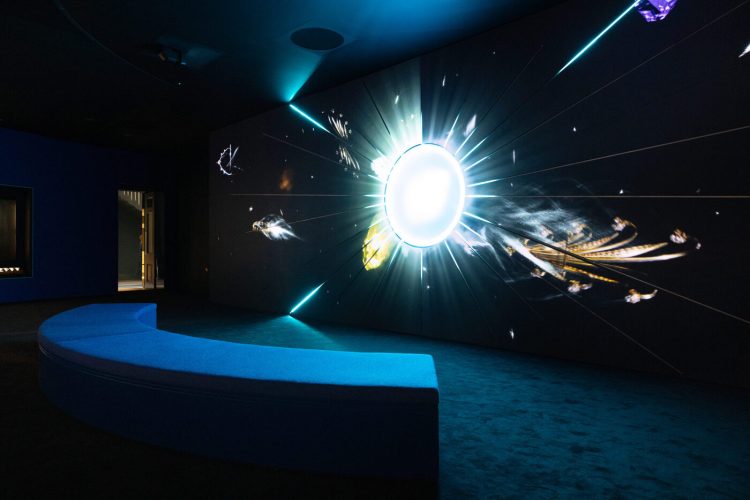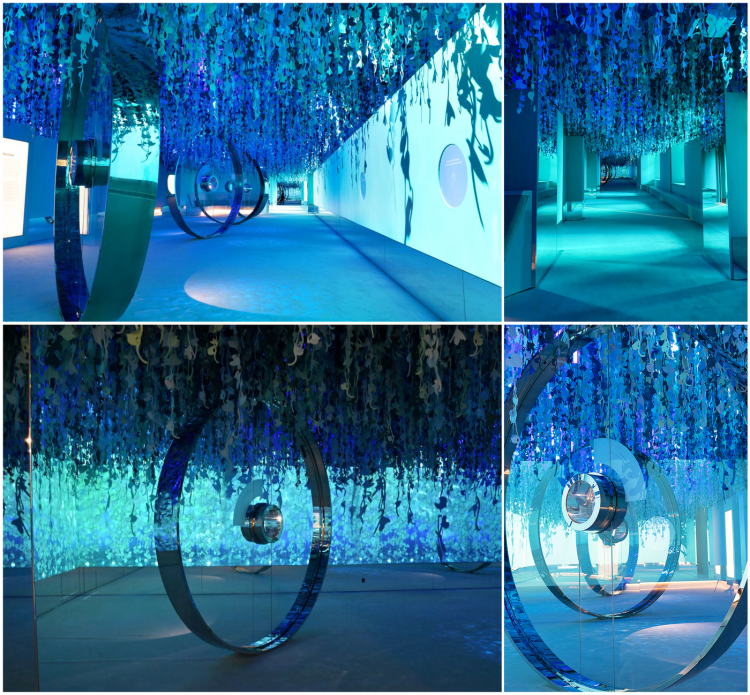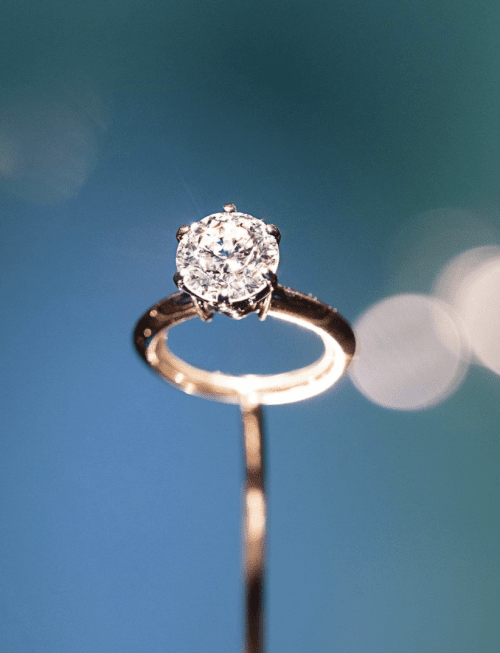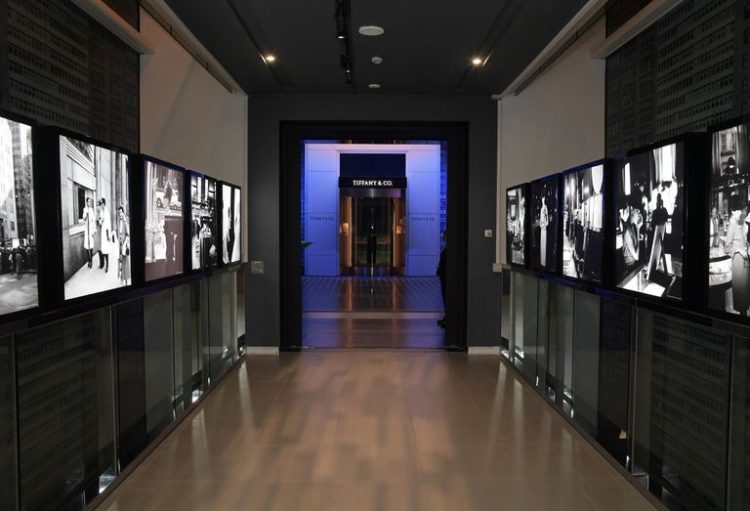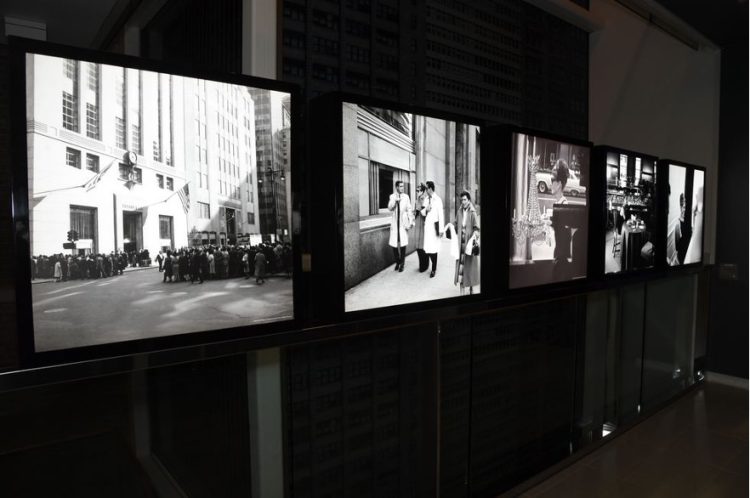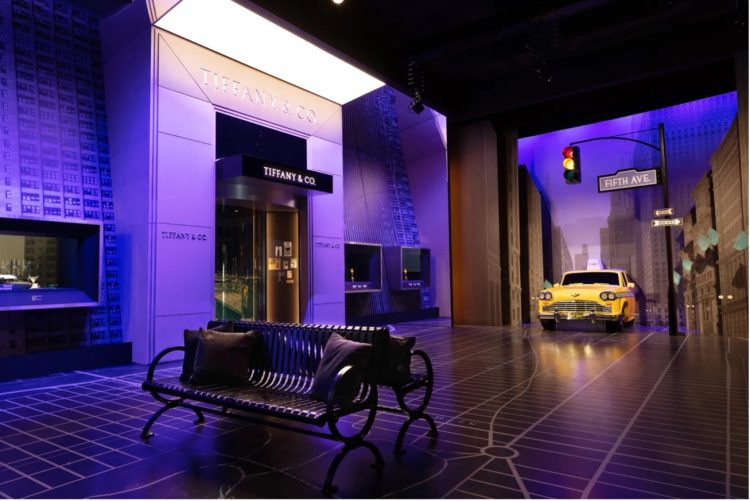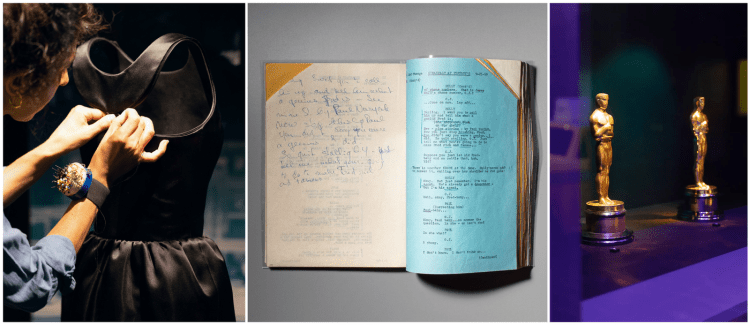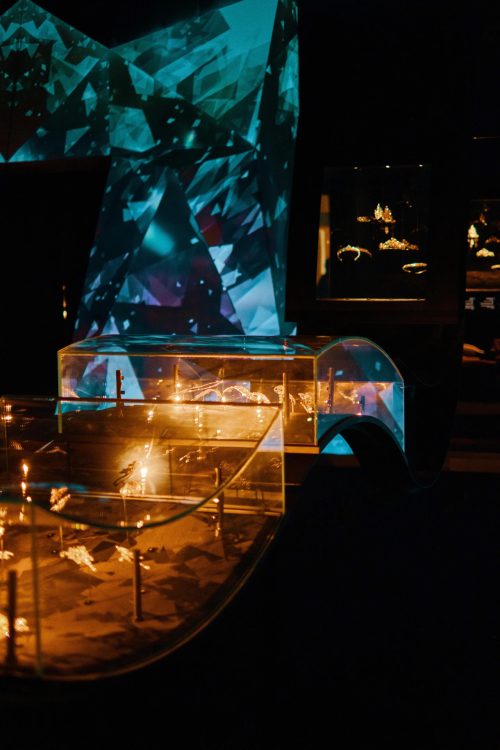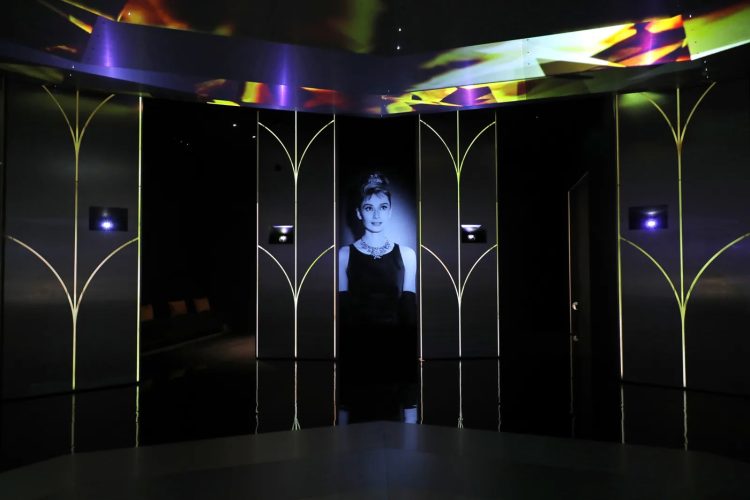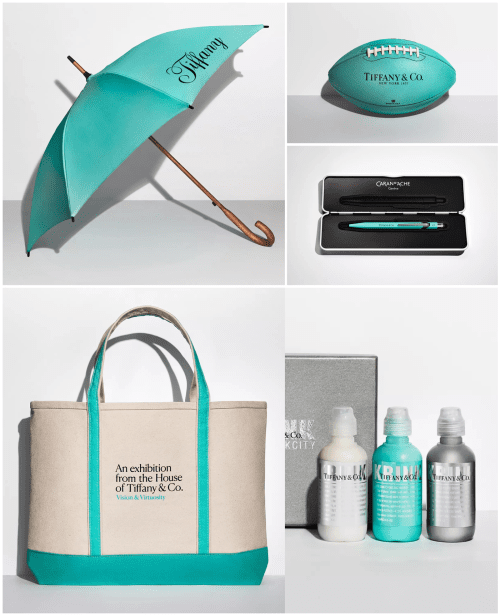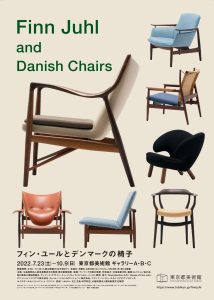"Beautiful design makes a beautiful life.” - Charles Lewis Tiffany
Always aiming for the best: exclusive design, the best materials, making use of the craftsmanship and creating refined objects, not only for the elite. This was the philosophy of the jeweler Charles Lewis Tiffany, who considered excellence the only possible way. So, it has been for almost two hundred years.
To celebrate this unique heritage, Tiffany & Co. - the legendary American brand founded in New York in 1837 – has organized the traveling exhibition Vision & Virtuosity. The show debuted with enormous success in Shanghai in 2019 at the Fosun Art Foundation and landed in the Saatchi Gallery in London in June 2022. New York will follow in the autumn.
According to Anthony Ledru, President and CEO of Tiffany & Co., “Vision & Virtuosity tells the extraordinary story of one of the oldest luxury jewelers, through its nearly 200-year history of pioneering creativity, legendary craftsmanship and sourcing of the world’s most extraordinary diamonds and gemstones.”
Vision & Virtuosity, are the key concepts driving Tiffany & Co. and are masterfully reflected in the work of the American luxury brand. Always inspired by nature, Tiffany’s designers create valuables that capture people's hearts: from jewelery to decorations and shop windows. During its long history, Tiffany & Co. has involved renowned artists and designers – such as Gene Moore, Jean Schlumberger, Rauschenberg and Johns, Andy Warhol, Elsa Peretti, Paloma Picasso, Frank O. Gehry and others - that significantly contributed to the global success of the brand.
The Vision & Virtuosity exhibition is hosted at the Saatchi Gallery in London and is organized into seven chapters celebrating the precious history of the brand.
The first chapter, Tiffany Creativity, offers a broad immersion in the brand's inventiveness. The enchanting skyline of New York at night accompanies the display of boxes containing some of the most iconic, spectacular and exciting shop windows ever created.
The showcase that welcomes visitors celebrates Tiffany & Co.'s one hundred and fifty years in London. Bird on a rock - created by French designer Jean Schlumberger - sits on the tower of Westminster Abbey. A small detail emphasizes the accuracy of the staging design: Big Ben's hands are positioned at 18:37, the year when Tiffany & Co. was founded.
An abandoned wooden jetty is emerging from a dune. This shop window - created by Robert Rauschenberg and Jasper Johns under the direction of Gene Moore in 1957 - houses aquamarine and diamond bracelets. George Paulding Farnham's Dragonfly Brooch - made of gold, silver, diamond, and sapphire - rests on an iron miniature of Central Park's Vanderbilt Gate. Another brooch from the same jeweler – made with diamonds, blue, pink, orange, purple, and green sapphires - is displayed in The Winter Picnic showcase. It was first exhibited in 1900 at the Exposition de Paris.
Directly from Hollywood, the window was created for the premiere of the film “The Great Gatsby”. A necklace with a multi-gem pendant made by Louis Comfort Tiffany in the 1920s – featuring an oval-cut sapphire with accents of circular-cut emerald and brown-yellow diamond - rests on a pyramid of champagne-filled glasses.
The second chapter World of Tiffany, hosted in a dark environment with curved displays, contains jewels and objects from the brand's history. These include a silver cocktail service created for the New York Universal Exposition in 1939, which recalls the architectural style of the 1920s and 1930s; an 1893 document celebrating the royal honors of Tiffany & Co.; the Bone Bracelet made in the 70s by Elsa Peretti, which marks a revolution in jewelry design. The bracelet's sensual and curvilinear design reproduces the wrist's anatomical shape and is one of Peretti’s most iconic jewels. Finally, the original Blue Box from the late 19th century stands out among trophies, prints, photos of great characters, and advertising posters.
While objects and jewels fascinate the visitor on one side of the room, on the other, an elegant installation intrigues them. A digital generator of precious items - with cuts of light that evoke the sun's rays or simply evoke the Tiffany & Co. gate on Fifth Avenue - spawns Tiffany’s historic necklaces and diamonds that float elegantly on the screen.
Blue Book, the third chapter of the exhibition, is located on the gallery's first floor.
The Blue Book, created in 1845, was the first mail order catalog. Initially containing only personal or home objects, it later became a catalog of high jewelry. The room, fully furnished with the scenic Tiffany lamps, exhibits masterpieces that have marked the majesty of the brand. Namely, the Dragonfly Brooch made by Louis Comfort Tiffany in 1904; a necklace with emeralds (probably purchased from Queen Isabella of Spain in 1878); the Hedges & Flowers necklace by Jean Schlumberger; and the Orchid Brooch created in 1889 for the Universal Exhibition in Paris.
Among the lamps on display is Purple-edge-wisteria, created by designer Clara Driscoll of the creative group Tiffany Studios. The composition of the lampshade lamp - with small purple glasses dotted with cerulean petals, rigorously cut by hand - gives the feeling of being under a wisteria pergola.
The Tiffany Studios group, made up entirely of women and born under the guidance of Louis Comfort Tiffany, had the task of designing and choosing the glass for the lamps and stained-glass windows. He was convinced that women were gifted with greater sensitivity and attention to detail than men.
Tiffany Love, the fourth chapter, celebrates love and its symbol par excellence: the diamond ring. A splendid cascade of paper flowers makes the setting evocative and fairytale. Giant rings filled with engagement rings create a path in the room. Here an interactive panel makes everything more playful: visitors can write, on the round screen, a love note that will float around the walls.
The Tiffany Setting, the modern engagement ring, was created in 1886 with a revolutionary design. Before then, diamonds were embedded in the band. Charles Lewis Tiffany introduced an innovative technique - the diamond is elevated with an invisible six-pronged frame - allowing the stone to receive light from any angle, maximizing its brightness.
Preamble for the fifth chapter, the Reality Experience room, allows the visitor to try and buy a diamond ring. The room is decorated with sober colors and contains some test stations. Its white walls are adorned with mirrors and hand drawings of the famous Tiffany Setting.
From this point, the behind-the-scenes images of the film Breakfast at Tiffany’s - based on the 1958 novel by Truman Capote - escort the visitor. In Breakfast at Tiffany’s, the fifth chapter, various memorabilia are displayed from the making of the film. Namely, the Academy Award to composer Henry Mancini for the music “Moon River” and the movie's original script with annotations by Audrey Hepburn. Besides, Hubert de Givenchy's iconic black satin dress - worn by the actress in the opening scene - is exhibited here. How do you forget that scene when Holly Golightly get out of the taxi and stops in front of the window of Tiffany & Co., eating a croissant and drinking a coffee? A life-sized yellow cab bursts through the wall, recreating that scene, a perfect backdrop for Instagram lovers.
The visitor is then invited to return to the first floor of the Saatchi Gallery, where he arrives in chapter six, Miracles of nature.
Immersed in the world of diamonds, this part of the exhibition represents what Tiffany & Co. has created over the centuries. The encounter between diamonds and human talent generates great artistic passion and masterpieces of technical precision. A dark environment, illuminated by panels reproducing cascades of diamonds, frames the Tiffany Archives diamonds. The 30's Diamond Bracelet, the Gold and Silver Diamond Brooch created in Paris in 1855 by the Bapst Brothers, the Savoy Diadem with a platinum band with diamonds and pearls. The Diadem - incorporating the geometric and clean lines of the Art Deco style - was created for “The Great Gatsby,” adapting one of the jewels of the Tiffany Archives.
The Diamond Necklace (dating back to the Golden Age) - with diamonds in the shape of a garland that reproduces a chain of rosettes and leaves - is an example of versatile jewels. It can be worn in various ways: a long necklace, choker and bracelet.
In addition, one of the most expensive jewels ever made by Tiffany & Co. is shown in this chapter: the reinterpretation of the World’s Fair Necklace, embedding the Empire diamond (over eighty carats). This ornament - whose name is a tribute to New York - is the perfect expression of the Tiffany tradition.
The seventh chapter Tiffany Diamond leads to the end of the exhibition. Tiffany-patterned panels decorate the yellow diamond tribute room. Vertical screens project the images of the few lucky people who have worn it, including Audrey Hepburn and Lady Gaga. A yellow pedestal in the center of the room displays the 128.54-carat Tiffany Diamond.
A specular composition – where the design of the ceiling reflects on the floor - produces a suggestive atmosphere. AR technology allows the visitor to wear the famous diamond virtually.
Before leaving this enchanted world, the last stop is the Tiffany Shop. Here visitors can buy an exclusive selection of gadgets and limited editions, all rigorously in Tiffany Blue: Daniel Arsham’s designed t-shirts and sweatshirts, Tiffany & Co. x Wilson footballs, Quartersnacks skateboards, Mellow Gemini vases, Krink markers, Caran d'Ache pen, and pencil sets and Bellocq tea sets.
What emerges from this exhibition is the extraordinary work of jewelry of Tiffany & Co. and the vision that Charles Lewis Tiffany had already had since 1837: pioneering, innovative and revolutionary.
Vision & Virtuosity exhibition highlights some lesser-known aspects of the brand, making it even more loved by the public. Knowing what he created, we can assert that Charles Lewis Tiffany was not only the most famous jeweler in the world but the most far-sighted one.
A personal note
Unfortunately, I could not attend the Vision & Virtuosity exhibition in London. Everything I wrote is the result of research and imagination. I tried to immerse myself in the fantastic work done by the designers of Tiffany & Co., and I hope my understanding of the exhibition is correct. Moreover, I hope the exhibition will land in Japan soon, so I can visit it and finally savor the magic of Tiffany & Co.

 日本語
日本語 English
English
